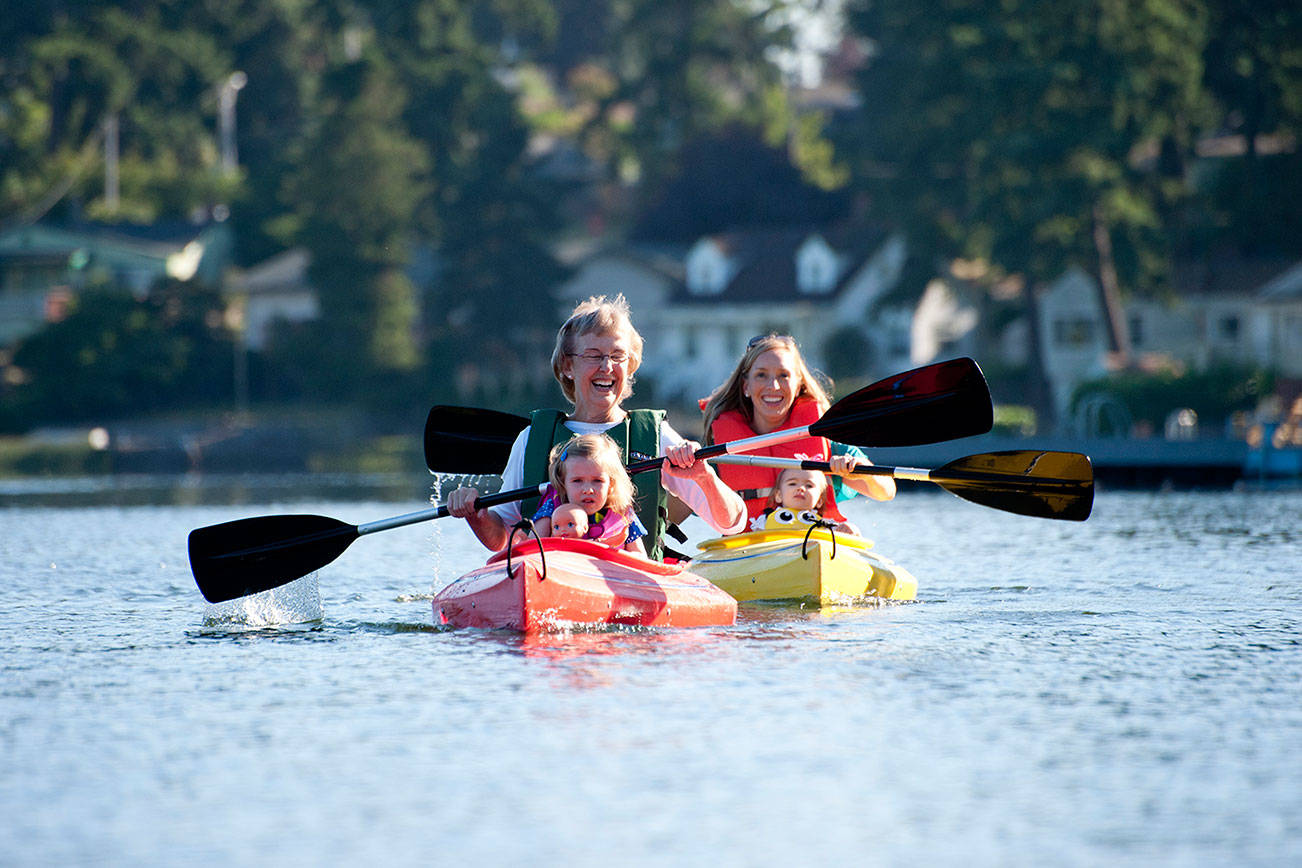By MultiCare Health System
Despite Hollywood’s best attempts, drowning in real life doesn’t look the way it does in movies.
Drowning is silent, and sadly the cause of almost 800 deaths a year for children in the United States, more than half of which are among children ages 0 to 4, according to Safe Kids Worldwide.
In Washington state, drowning is the second-leading cause of fatal injury for children and teens ages 1 to 17 and the No. 1 cause for ages 1 to 4.
But there’s good news: You can take simple precautions to ensure your family is safe as you boat, swim and play in the water.
1. Always wear life jackets.
Life jackets may feel like a chore to wear, but they could save your life. According to the U.S. Coast Guard, 85 to 90 percent of boaters who drowned were not wearing life jackets.
You may be thinking “I know how to swim. Why do I need a life jacket?”
But being able to swim won’t necessarily help in chilly Washington waters, which average 50–55 degrees year-round. Water this cold can dangerously lower body temperature, making your limbs numb and swimming difficult.
“You can be an excellent swimmer, but if you can’t move your muscles, you’ll sink like a stone,” says Erin Summa, Health Promotion Coordinator for the Mary Bridge Center for Childhood Safety.
Cold shock response, or the body’s automatic reflex when immersed in cold water, may trigger a deep inhalation of air. If you’re underwater when this happens, you may end up with water in your lungs, making the situation worse.
Life jackets keep you afloat and help your core stay warm.
Children should always wear a life jacket near open water, whether swimming or boating. Washington state law requires children 12 years old and younger to wear a U.S. Coast Guard-approved life jacket at all times when underway in a vessel less than 19 feet in length.
Even in a “controlled” setting, such as at a swimming pool, or when there’s no plan to get in the water, such as fishing off a dock, Summa advises parents to put life jackets on children.
Be sure to check the fit, too. Fasten all zippers and straps and pull them snug. To test whether it’s fitted properly, pull up on the shoulders. Your child’s ears and chin should not slip through the life jacket.
Water wings, rescue rings and boat cushions are not a replacement for life jackets, and life jackets shouldn’t be a substitute for a designated “water watcher” keeping an active eye on children in the water.
The Mary Bridge Center for Childhood Safety offers free loaner life jackets year-round. Call 253-403-1234 for more information.
2. Enroll your children in swimming lessons.
Swimming doesn’t drown-proof a person, but it’s an important skill to have — and the only sport that could potentially save your life, Summa says.
Enroll your children in swimming lessons every summer to maintain and grow their skills, she suggests.
“It’s not a box you check — it’s ongoing education,” she adds.
The Y of Pierce and Kitsap Counties offers a variety of youth and adult swim lessons at multiple locations. Visit the Y’s website for more information: ymcapkc.org
Metro Parks Tacoma offers swim lessons as well, plus outdoor and indoor pools open to the public: metroparkstacoma.org/pools-spraygrounds
3. Obtain a boater safety education card.
Did you know that Washington State law requires operators of power-driven vessels with 15 horsepower or greater — so, basically, all power boats and personal watercraft — to take a safety education course and obtain a Washington state boater education card?
Boaters age 12 and older can take the education course in a classroom, online or at home. You can learn more at the Washington State Recreation and Conservation Office’s boating safety and education website: boat.wa.gov
4. Remember water hazards exist at home, too.
Water is everywhere, from the toilet to buckets in the backyard. If your child goes missing at home, check sources of water first.
“Toddlers are curious by nature and top-heavy by design,” Summa says.
Never leave your baby or toddler in the tub, even for just a second. Baby bath seats often provide a false sense of security. They are not a safety device, and do not prevent drowning.
If you have a pool at home, be sure to use multiple layers of protection: a four-sided fence, self-closing gate latches, door alarms and spa/pool covers.
Summa also recommends toilet lid locks, since toilets are at perfect reach for a toddler.
MultiCare Health System is a not-for-profit health care organization with more than 12,000 employees and a comprehensive network of services throughout Pierce, South King, Thurston and Kitsap counties.


